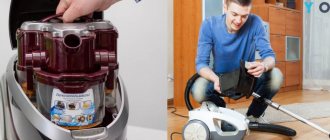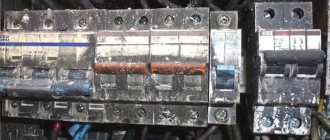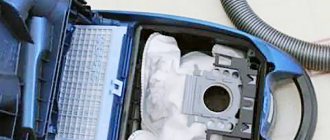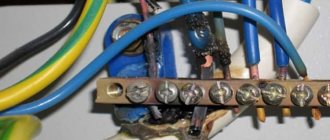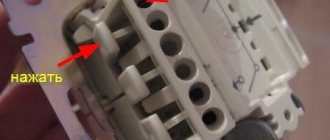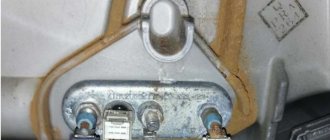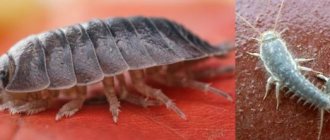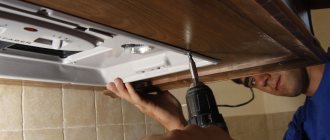Even if you have a lot of free time, turning off the vacuum cleaner while cleaning is very annoying. This can be confirmed by all owners who have at least once had to finish cleaning with a broom and dustpan. If you notice that the body of the vacuum cleaner gets very hot, after which the device turns off and refuses to work until it cools down completely, it is important to correctly determine the reason why this is happening. To make it easier to understand, you first need to understand the principle of operation of vacuum cleaners.
The electric motor is the heart of the vacuum cleaner
All vacuum cleaners have a motor that works by connecting to an electrical outlet or using a battery. The principle of operation of a household appliance is very simple: an electric motor rotates a vacuum turbine, creating a vacuum inside the working chamber. The air tends to fill it and is directed through a hose with various attachments to a bag or container, taking with it dust and small debris. There they remain, and the air, having passed through an additional filter, is directed through the motor windings or turbine, filtered again and released back into the room.
Electric motors can have different designs. In vacuum cleaners for dry cleaning, direct-flow motors are most often used, in which air passes through the motor windings. If the model is intended for wet cleaning, this design is not suitable: there is a risk of water droplets getting on the windings, so bypass motors are used. With them, the intake air does not come into contact with the electrical part, but is directed through the turbine, bypassing the engine. This creates difficulties with cooling the motor, so the design is supplemented with another impeller, which is located in the upper part of the engine.
Vacuum cleaner motors also differ in the number of vacuum stages. Simple vacuum cleaners have only one level, which allows you to create maximum air flow, but the degree of vacuuming is not too high. Two- and three-stage vacuum cleaners create a more powerful vacuum, but they have a lower air flow rate.
What causes the suction power to drop?
The roots of the problem that causes the vacuum cleaner to not pull are the same as when it heats up. Found in units intended not only for dry cleaning, but also for wet cleaning. Poor air flow is the first sign that something is wrong.
So, if the vacuum cleaner does not suck up dust, what should you do? Using diagnostics, you need to understand the cause of the malfunction:
- A prerequisite is to disconnect the device from the network.
- Then we perform an inspection.
- Check the mode. Perhaps you accidentally caught the lever or the set parameters were lost.
- If this is not the reason, then it becomes necessary to disassemble the device. Let's take for example a Samsung vacuum cleaner that does not suck up dust. We detach its components: brush, pipe. We remove the body and inspect the insides: dust collector, filters, engine, other parts.
If the cause of the breakdown is found and relates to the above points, you can begin to eliminate it.
Let's start with the dust collector
Why doesn't the vacuum cleaner suck up dust? We often see the answer to this question when we remove the dust bag from the device. Older models do not have a special indicator that would show the degree of fullness. Therefore, you need to check it yourself from time to time. Force
collection may decrease or even disappear if the dust collector space is filled to 70% or more. Therefore, it is worth changing it.
When cleaning, you should pay attention to the material from which the garbage bag is made. If it is paper, you need to throw it away and put in a new one. If it is fabric, shake it out well and wash without using soap. Once it dries, you can return it to its place. Such bags are reusable, however, you need to follow the cleaning procedure: if you do not wash the bag, the remaining dust may get into the unit.
Why does the device heat up quickly? Possible reasons
Normally, the electric motor heats up during operation and is immediately cooled by the air flow. At the same time, it is possible to maintain a fairly stable temperature. But if something doesn't work as intended, the vacuum cleaner starts to get very hot. To prevent the motor from burning out, protection is activated.
Constant overheating, even not too much, poses a danger to vacuum cleaners. The problem is that the impellers of fans and turbines in many models are made of plastic. It is lightweight, can take any shape, and is quite cheap. However, there is also a minus - the ability to deform when heated. If the impeller is deformed, gaps appear that do not allow a sufficiently strong vacuum to be created in the device.
Residual shutdown system
The protective shutdown of the vacuum cleaner occurs thanks to a special sensor. If the temperature exceeds a certain value, the circuit opens. To prevent owners from trying to ignore the problem, the shutdown sensors have hysteresis - this is the name of the delay between turning off and turning on the motor, based on the temperature difference. Until the vacuum cleaner cools down to a certain point, the protective system will not allow it to be turned on. If not for this, the motor could have burned out.
Interturn short circuit of windings
This problem sometimes happens with straight-through vacuum cleaners if inattentive owners suck up spilled water or drinks from the floor with dry vacuum cleaners. Contact between water and electricity always leads to sad consequences, usually irreversible. In this case, the motor is replaced, and the operation of the vacuum cleaner is restored.
Poor engine ventilation
In this situation, the shutdown occurs due to the activation of the protective system. And heating occurs due to the fact that the motor works with increased load. For models with an additional impeller, the problem may be caused by the impeller being jammed or deformed.
Worn brushes
In this case, the power of the motor itself is reduced. Replacing the carbon brushes can help if you can find suitable spare parts. It is not recommended to carry out this operation without experience; it is better to turn to professionals.
Filling of bag or container
The vacuum cleaner tries to pass air through itself as usual, but a clogged dust container does not allow this to happen. Having discovered that the equipment does not suck in debris, the owners try to turn on a higher speed, and the motor begins to heat up even faster. The problem can be solved by emptying the trash bag or container.
Clogged hose or pipe
This problem very often leads to overheating or even burnout of the motor, reducing the service life of vacuum cleaners of any type. But dealing with it is not as difficult as it might seem. First you need to disassemble the telescopic handle. Its parts are visible to the light; if the light is not visible on the straight section, you just need to push the plug out with a long thin object. Convenient to use wire. Be sure to check the bends in the area where the nozzles and handles are attached - this is where the air flow changes direction, and conditions for clogging the lumen are created. If everything is fine with the handle, disconnect the hose from the body and also inspect it for debris plugs. It is recommended to perform the procedure even with a slight decrease in power, without waiting for the device to overheat.
Why does the vacuum cleaner motor get hot?
It is necessary to study the technical documentation, determine the design, the presence of thermal protection and the recommended cycle time. It is important to find out whether heating began after several months of operation or from the first days. Does the device have an overheating lock and a power regulator? Is forced air cooling used? How long does the cleaning take?
The most likely reasons why the vacuum cleaner motor gets hot are:
- the filters are clogged,
- plug in the air passage,
- full dust bin,
- faulty motor or regulation.
To determine the cause of the malfunction, you should run the vacuum cleaner without canopies, bag and filters. If you don’t hear any extraneous knocking, the motor doesn’t heat up, or makes loud noise, then there’s a problem in the work sector.
It is necessary to install a dust collector, filters and check the traction force in the inlet. It pulls weakly, the motor in the vacuum cleaner gets hot - the reason is clogged filters. You need to empty and wash the bag and clean the filter set. Some components cannot be wetted and require replacement after a certain time.
The next stage of the search is the air channel for delivering garbage to the inlet. The tubes can become clogged with hairballs or straws stuck across them that collect debris. It is necessary to clean the channel with a straight rod without burrs and make sure that air passes through. To do this, turn on the vacuum cleaner and press your palm against the pipe, without the nozzle.
The brush also needs to be inspected, cleaned of fibrous dirt and the elbow through which air enters the pipe is checked for blockages. If the motor heats up under load, it is necessary to measure the time until it warms up from the start of operation. It can be determined by the outlet air temperature. It is normal for a low-budget, low-power model to work for up to 15 minutes without air cooling. Powerful commutator motors operate for 30-40 minutes, inverter motors for up to an hour.
Where a power regulator is installed in the vacuum cleaner, it is normal to operate at medium load, periodically turning on the maximum load. When the design has a thermal relay, if the engine gets too hot, a lock is triggered and the vacuum cleaner turns off. You can turn it on only after it has completely cooled down. It happens that the shutdown occurs without heating, the switching on is quick, then the contact is faulty or there are problems with the power supply.
If the engine idles calmly, but quickly heats up in operating mode, an inspection of the power unit is necessary. You can get to the heart of the unit after dismantling the housing. Without disassembling the motor, replace the worn carbon brushes of the commutator motor, observing polarity. It is their production that creates poor contact with the current collector, resulting in a large number of sparks that melt the plastic. As a result, the vacuum cleaner motor gets hot and stinks. You can replace the fuse and brushes yourself. Further disassembly may reveal a scattered bearing race, broken strands in the coil, or a short circuit in the rotor. In this case, you need to change the engine or use the services of a service center. Sometimes repairs can cost more than a new motor without a guarantee of long-term performance.
You should not disassemble the vacuum cleaner body yourself during warranty service. If you are sure that you have violated the instructions, the service center will indicate the cause of the malfunction as incorrect operation, then go for it.
Troubleshooting solutions
For whatever reason, the vacuum cleaner turns off, the owners have three options:
- read reviews on forums and try to put the equipment in order yourself;
- contact a service center or a good repairman found through friends;
- buy a new vacuum cleaner.
The first option is good if the warranty period has long expired, so you won’t be too upset if you completely break your vacuum cleaner. The second case is for models with low wear. Those that are under warranty must be serviced at a service center. The third option will be the best solution if your equipment cannot be repaired, is very worn out, or requires a very large investment.
Reliable vacuum cleaners from Miele
Miele products have an impeccable reputation all over the world. If you dream of a vacuum cleaner that can easily clean the entire house, will look beautiful and will appeal to all family members, feel free to choose a model from the Miele catalog. She has the most incredible helpers for maintaining cleanliness:
- universal three-in-one transforming models;
- traditional vacuum cleaners with a dust container up to 4.5 liters;
- equipment with a vertical body and a control panel on the handle;
- robots.
Each model is unique in its own way. Some boast ultra-light weight, others boast high suction power, and others boast a variety of interchangeable attachments for caring for different types of surfaces. But the main thing is that all models undergo strict quality control and serve for many years!
How to understand what is causing the vacuum cleaner to heat up?
The most common causes are: dirty filters, full dust containers, broken components, malfunctioning engine.
How to understand what exactly affects the unit? It is better to adhere to a certain sequence and use the method of eliminating inappropriate items:
- For a vacuum cleaner that stops heating if you disconnect the hose and start it, the reason may be in the nozzle or in the pipe itself.
- Next, check the unit inlet for any additional obstructions. If everything is in order, move on to the next point.
- Depending on the model of the vacuum cleaner, carefully remove the container where all the small debris and dust fall: a bag, a container. Let's start the device and see how it works.
- Another reason why the vacuum cleaner overheats and turns off may be filters. Just clean them carefully.
- The last point is a breakdown in the engine. In this case, the vacuum cleaner may overheat, causing it to turn off on its own.
In most cases, you can make the repair yourself. This does not require deep knowledge. However, there are situations in which only a qualified specialist can cope with the task.
Robot vacuum cleaners
This category of vacuum cleaners is the dream of those owners who like to keep their home tidy every day. Miele robot vacuum cleaners can work without interruption for an hour. Their navigation system makes it easy to navigate the space so that there are no untidy pieces left in the rooms. Movable and maneuverable, they easily clean under beds and tables, clean carpets with a pile length of up to 17 mm and sweep dust out of cracks and corners no worse than the owners themselves. True, for heavily polluted rooms it is better to have a powerful model with a large dust collector on hand, so many owners buy two vacuum cleaners at once - a traditional one and a robot.
Buy with a guarantee
Miele uses exclusively high-quality motors with a reliable design, high power and low noise level. So that buyers do not doubt their reliability, the manufacturer provides a long warranty on all models. If you take proper care of your Miele vacuum cleaner, it will last for many years without breaking down.
When ordering one of the models on the website where Miele household appliances are collected, you can include other small or large household appliances in your purchase: hoods, refrigerators, vacuum cleaners, hobs, ovens and much more. Take the opportunity to turn your home into an oasis of cleanliness, delicious smells coming from the kitchen, comfort and tranquility!
